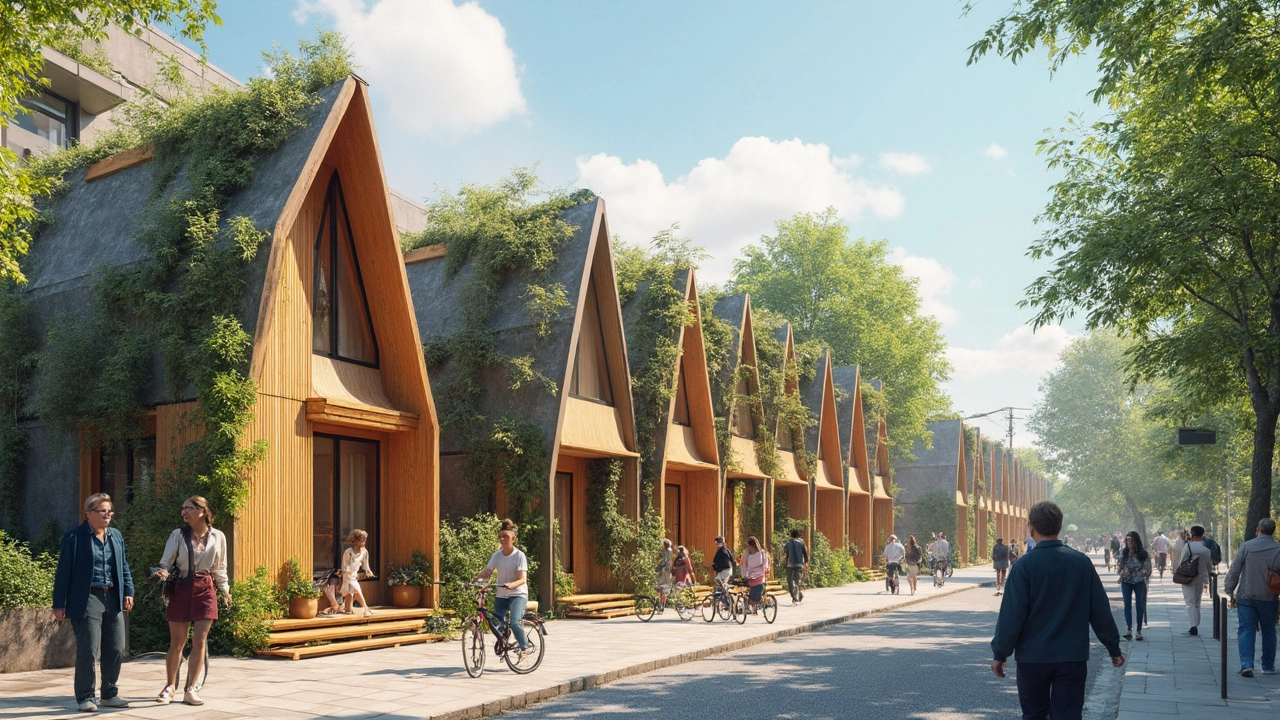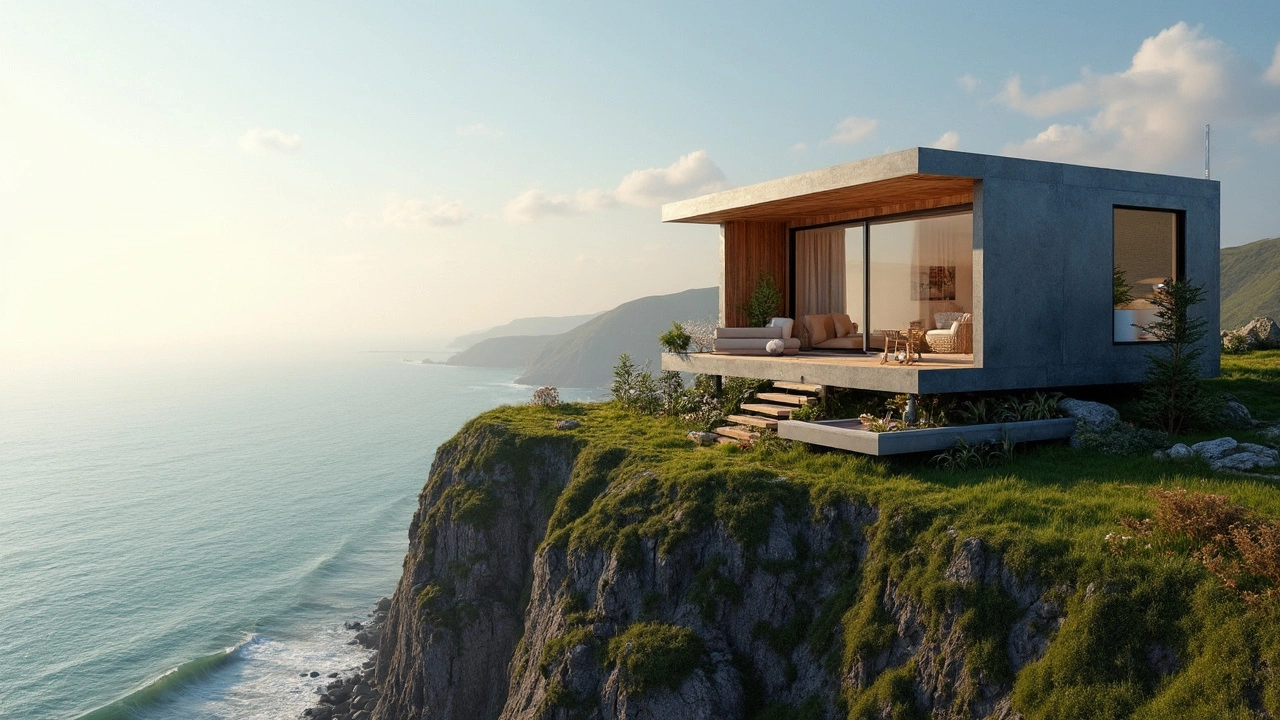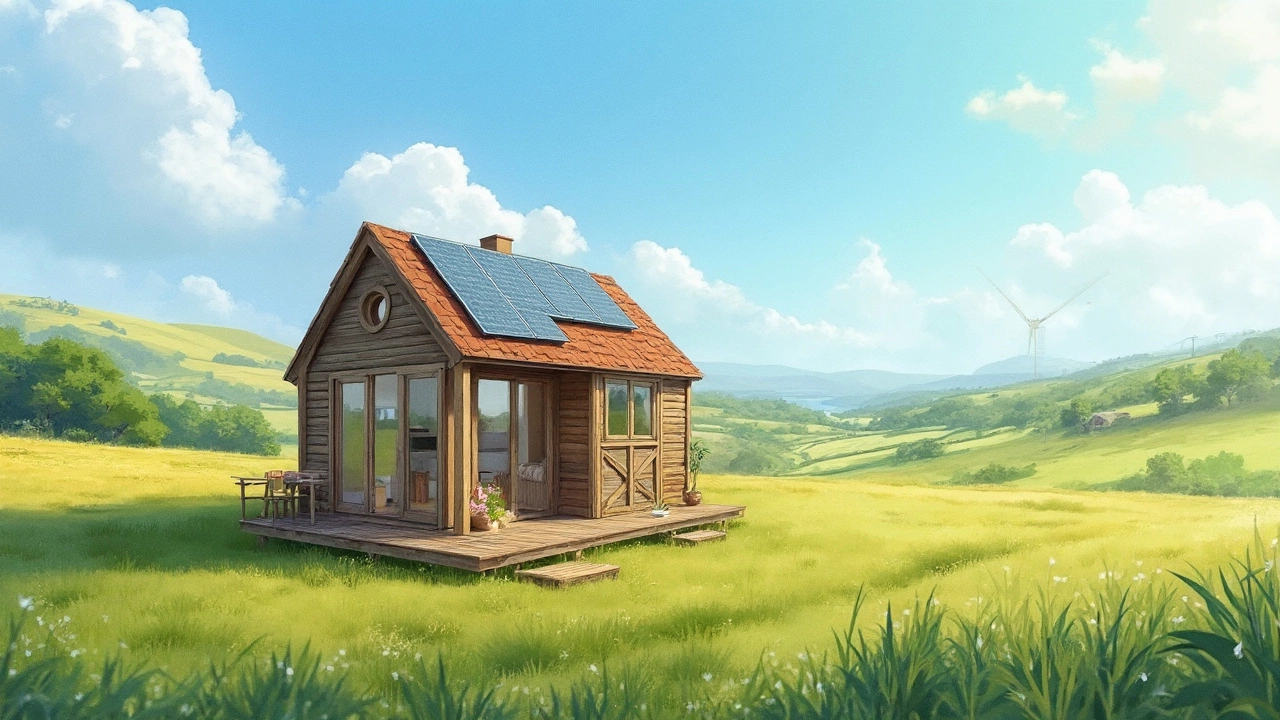Ever wondered how living in a tiny house can be one of the greenest choices you can make? Well, it turns out these compact homes are pretty amazing when it comes to eco-friendliness. For starters, tiny houses use way less energy because there's simply not much space to heat or cool. And let's face it, every square foot counts when you're saving the planet.
Not only do tiny homes consume less energy, but they also take fewer materials to build. Smaller spaces mean less wood, less metal, less everything. It's like giving Mother Nature a break from all our construction demands. Wanna go greener? You can even use reclaimed materials to build the house, giving them a new life instead of ending up in a landfill.
- Reducing Carbon Footprint
- Efficient Resource Use
- Energy Conservation
- Minimalist Lifestyles
- Environmental Impact
Reducing Carbon Footprint
Living in a tiny house is like a secret weapon against a big carbon footprint. Imagine powering a whole lot less space with renewable energy. Because you’re using less energy, it’s a whole lot easier to switch to sustainable sources like solar panels.
When it comes to construction, these homes shine bright for being eco-friendly. A tiny house usually requires just a fraction of the materials that a regular-sized home needs. This means less deforestation and a decrease in the demand for new materials. Plus, the trend of using reclaimed or recycled materials is gaining traction, adding another layer of eco-friendliness to these little abodes.
Why Size Matters
Size matters big time when reducing your impact on our planet. Less space means less energy needed to heat, cool, and light your home. On average, tiny homes use about 7% of the energy a traditional house gobbles up. A smaller living area = less stuff. This also means fewer shopping sprees that can rack up carbon footprints from shipping and manufacturing goods.
Even when it comes to outdoor space, tiny houses do things differently. Often, they sit on a smaller plot of land, meaning fewer yards to maintain and less resource-heavy landscaping.
Transportation and Mobility
Some tiny houses are on wheels, making them mobile. This is cool because it means resource-saving when moving your house! Think about it – relocating a tiny home doesn’t mean a big carbon load like selling and buying a new home does. You just move your whole living space, reducing emissions associated with real estate transactions.
The magic of tiny living is really about making a big impact with less. It’s hitting pause on energy use and resource depletion and playing forward on sustainability.
Efficient Resource Use
Tiny houses are champs when it comes to using resources wisely. When you build and live in a tiny house, you're choosing a lifestyle that naturally leans towards efficiency. Here's why.
Minimal Materials Needed
One obvious perk is the reduced amount of building materials. A smaller footprint means you need less wood, metal, and other resources. Not only does this save on costs, but it also means fewer trees are cut down, and there's less demand on manufacturing industries.
Water-Wise Living
Water usage is also more efficient in tiny houses. With clever design, such as low-flow faucets and composting toilets, your water footprint can be drastically reduced. Some folks even go off-grid with rainwater collection systems to step up their eco game.
Smaller Spaces, Less Stuff
Living in a small space naturally limits your consumption. You only have room for what's essential. This pushes you towards a minimalist lifestyle where you focus on quality over quantity. Fewer possessions mean less waste and more thoughtful buying choices.
Sustainable Energy Sources
Many tiny house dwellers opt for solar panels or wind turbines for their energy needs. Given the lower energy requirement of these homes, renewable sources are often enough to power everything. Imagine the freedom of knowing your electricity is entirely green.
In short, the whole premise of tiny living encourages using only what you need—nothing more, nothing less. Every aspect of these homes screams sustainability, and that's what makes them such a fantastic choice for the environmentally conscious.

Energy Conservation
When it comes to energy conservation, tiny houses truly shine. With their smaller size, these homes require less energy all around, from heating and cooling to lighting and cooking. Imagine trying to heat a tiny space compared to a sprawling 2,000-square-foot home—it's like switching from an energy-drinking beast to a sippin' little teacup.
Many people opting for tiny living are keen on going off-grid. This means using solar panels or wind turbines, reducing dependency on non-renewable resources. And since tiny homes use less power, those solar panels can often cover everything you need, right from running your fridge to keeping the lights on.
Smart Technology
These days, lots of tiny homes come equipped with smart tech, making energy conservation even easier. You can control your home's temperature, lighting, and even some appliances from your smartphone, meaning you’ll only use energy when absolutely necessary. Programs or apps let you track your energy consumption, so you'll know exactly what devices are guzzling the most watts.
Insulation and Window Design
An often overlooked but crucial design aspect is insulation. A well-insulated tiny house can stay warm in winter and cool in summer with minimal energy. And don't forget about those windows! Windows in key spots capture natural light and heat, cutting down on the need for both artificial lighting and heating.
Here’s a quick look at how some energy savings stack up:
| Feature | Energy Savings |
|---|---|
| Solar Panels | Can cover 100% of energy needs in many setups |
| Smart Tech | Up to 10-15% less energy waste |
| High-Quality Insulation | Reduces heating and cooling needs by up to 30% |
In short, living in a tiny house means embracing a lifestyle where you're always zipping up those energy drains—the smaller the home, the bigger the ecological win!
Minimalist Lifestyles
So, you’re thinking about jumping into the tiny living movement, huh? Embracing a minimalist lifestyle can be eye-opening and incredibly rewarding. Imagine living in a space where everything you own has a purpose and brings you joy. It sounds liberating, right?
Living in a tiny house encourages you to cut out the clutter and only keep the essentials. This way, you're not just decluttering your house but your mind too. It's like a refreshing mental detox with the added perk of saving the planet. Plus, you might save some serious cash by not buying things you don't really need. That's right—fewer impulse buys, more savings for that epic vacation you've been dreaming about!
Focus on Experiences Over Things
One cool thing about adopting a minimalist lifestyle is that it turns your attention toward experiences rather than stuff. With less room to store physical items, many people find they spend more on adventures, learning opportunities, and spending quality time with loved ones. In a world where everyone’s hustling, slowing down and valuing the little moments becomes even more important.
Environmental Perks
Here's a neat fact: the minimalist lifestyle significantly reduces waste. On average, Americans generate about 4.4 pounds of trash per day. By owning less, you'll naturally contribute to cutting this down. Less stuff means less waste, and that's something our planet could definitely use more of. Plus, when you're living in a small space, you become more thoughtful about the resources you consume, like water and electricity.
| Category | Average Waste (lbs) |
|---|---|
| Non-Minimalist | 4.4 |
| Minimalist | 3.1 |
In short, embracing a minimalist lifestyle while living in a tiny house is a win-win. It's about finding that sweet spot where simple meets sustainable, and every day feels a bit lighter and more meaningful. Ready to join the tiny house revolution?

Environmental Impact
Tiny houses are making a big splash when it comes to reducing our impact on the planet. These small-scale living spaces naturally lead to a lower carbon footprint, not just because they're smaller, but because they shift our mindset towards consuming less. It also helps that tiny houses often push us to adopt more minimalist lifestyle choices, leading to less waste overall.
One of the standout features of tiny houses is their efficient use of space and resources. Let's talk numbers. Did you know that the average tiny home is about 186 square feet? Compare that to a regular home which can be around 2,500 square feet! Just by going tiny, you're already using fewer construction materials. Less demand for resources means less strain on Mother Earth.
Water Conservation
Water use is another area where these spaces shine. Many tiny house owners install systems to catch rainwater and use composting toilets to minimize water waste. It makes you much more aware of how much you're using, which naturally leads to conservation. Lower water use not only saves your wallet but helps protect our planet's precious water supply.
Renewable Energy Options
Going tiny also opens up opportunities to fully power your home with sustainable energy. Solar panels, for example, are a popular choice since it doesn't take much to provide the energy needed for a small space. It's an eco-friendly win-win, cutting down reliance on nonrenewable sources and lowering your energy bills.
Overall, tiny houses aren't just a home design trend. They're a conscious choice toward a more eco-friendly and sustainable way of life. By living small, you make a big difference!
